Chairman Wheeler, tear down that wall!
What will it take for FCC to break the 95 GHz ceiling in the "Spectrum Frontier" NPRM?
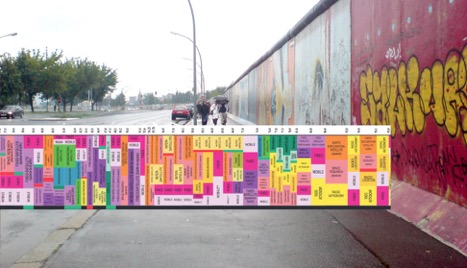
On October 16, 2003 in the Report and Order of Docket 02-146, FCC raised the upper limit of its radio service rules to 95 GHz. They have remained there ever since. The table below from the FCC Allocation Table, §2.106, shows the spectrum allocations and service rules from 86 to 105 GHz. Note the orange circle we have added to emphasize the lack of rules above 95. (Actually there are two small and narrow exceptions: amateur radio use and ISM use.)
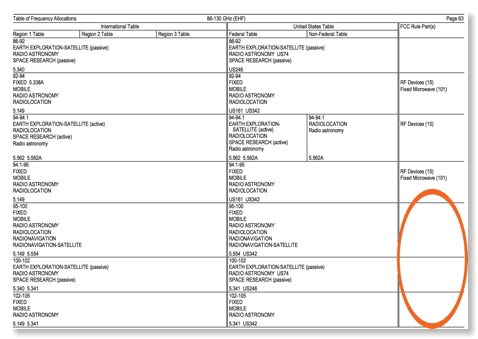
Chairman Wheeler last week announced "rebranding" the Docket 14-177 NOI in a "Spectrum Frontiers" NPRM that will be considered at the 10/22 Commission meeting. He stated:
This NPRM proposes a framework for flexible spectrum use rules for bands above 24 GHz, including for mobile broadband use. Promoting flexible, dynamic spectrum use has been the bedrock that has helped the United States become a world leader in wireless.
We are leveraging regulatory advances and propose to use market-based mechanisms that will allow licensees to provide any service – fixed, mobile, private, commercial, and satellite – depending on the band, and allow unlicensed uses to continue to expand. We are proposing to create a space that leverages the properties of this high band spectrum to simultaneously meet the needs of different users.
We hear from usually reliable sources that the NPRM will follow the NPRM and ignore the comments in keeping the bands considered under 95 GHz. In an August statement Chmn. Wheeler wrote
Our sources report nothing has changed. Furthermore despite the phrase "for a wide variety of users" the NPRM is expected to focus on the needs of CTIA members. We do not think it is inappropriate to provide new spectrum for such carriers, even though many are frankly ambivalent. (VZW did not even bother to file reply comments.) But what about other possible users?The spectrum bands proposed by the United States to be studied for consideration at WRC-19 include 27.5-29.5 GHz, 37-40.5 GHz, 47.2-50.2 GHz, 50.4-52.6 GHz, and 59.3-71 GHz. We will consider these bands, or a subset of the bands, in further detail in an upcoming NPRM, with the goal of maximum use of higher-frequency bands in the United States by a wide variety of providers.
What about broadband fixed links between locations where fiber installation is very expensive? (The fiber and electronics for fiber optic systems are inexpensive leading to a low cost/bit/mile if you exclude installation cost. But in urban environments installation costs can be huge for new fiber.) Millimeterwave fixed systems can serve such applications with a higher hardware cost, but lower total cost than fiber optics. Yet they face the same 95 GHz barrier!

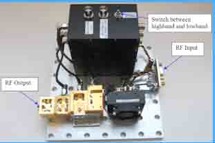
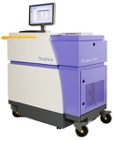
Why not also remove regulatory uncertainty from the manufacturers who are providing gray market equipment for non communications uses such as Terahertz spectroscopy? For example at left is a 575-560 GHz source sold by a US firm for THz spectroscopy and at the right is a Japanese system for use at 60 - 4000 GHz. These exist in a Title III "Never Never Land" with respect to their legality. Clearly they are not a target of the rapidly shrinking spectrum enforcement operation at FCC, but any investor doing due diligence would be thoroughly puzzled about the regulatory status of such technology. Such uncertainty is a disincentive to private capital formation which may explain why the more elegant device above comes from a Japanese firm.
In recent months ETSI, a nominal "standards organization" that includes most European counterparts of FCC, released the above report which is basically a master plan for millimeter wave development by Europe, Inc. while FCC stalls at 95 GHz. The applications considered in the ETSI report include both those of cellular carriers and other applications. They do not have tunnel vision focused solely on the needs of CTIA's European counterparts and spectrum below 71 GHz. (Does the Commission remember that in 1985 all the key industry players all opposed the Docket 81-413 rulemaking that is now the basis of both Wi-Fi and Bluetooth?)
Indeed, if FCC is at a loss what to do, maybe it should just propose endorsing the ETSI report? This would significantly reduce regulatory risk for US entrepreneurs!
Both the FCC's Asian and European counterparts, APT and CEPT, are proposing for WRC-15 new agenda items for WRC-19 that would go far beyond FCC's present technological meekness. APT proposes to "study potential candidate frequency bands for use of the land mobile and fixed services” between 275 GHz and 1000 GHz while CEPT proposes to “identify candidate frequency bands for use by systems in the land mobile and fixed services” in bands up to 450 GHz. FCC just can think beyond 95 GHz! Why?
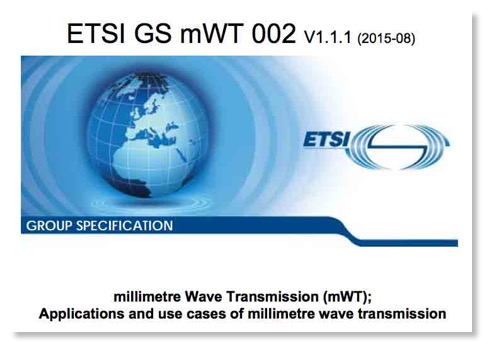



![Validate my RSS feed [Valid RSS]](valid-rss-rogers.png)

